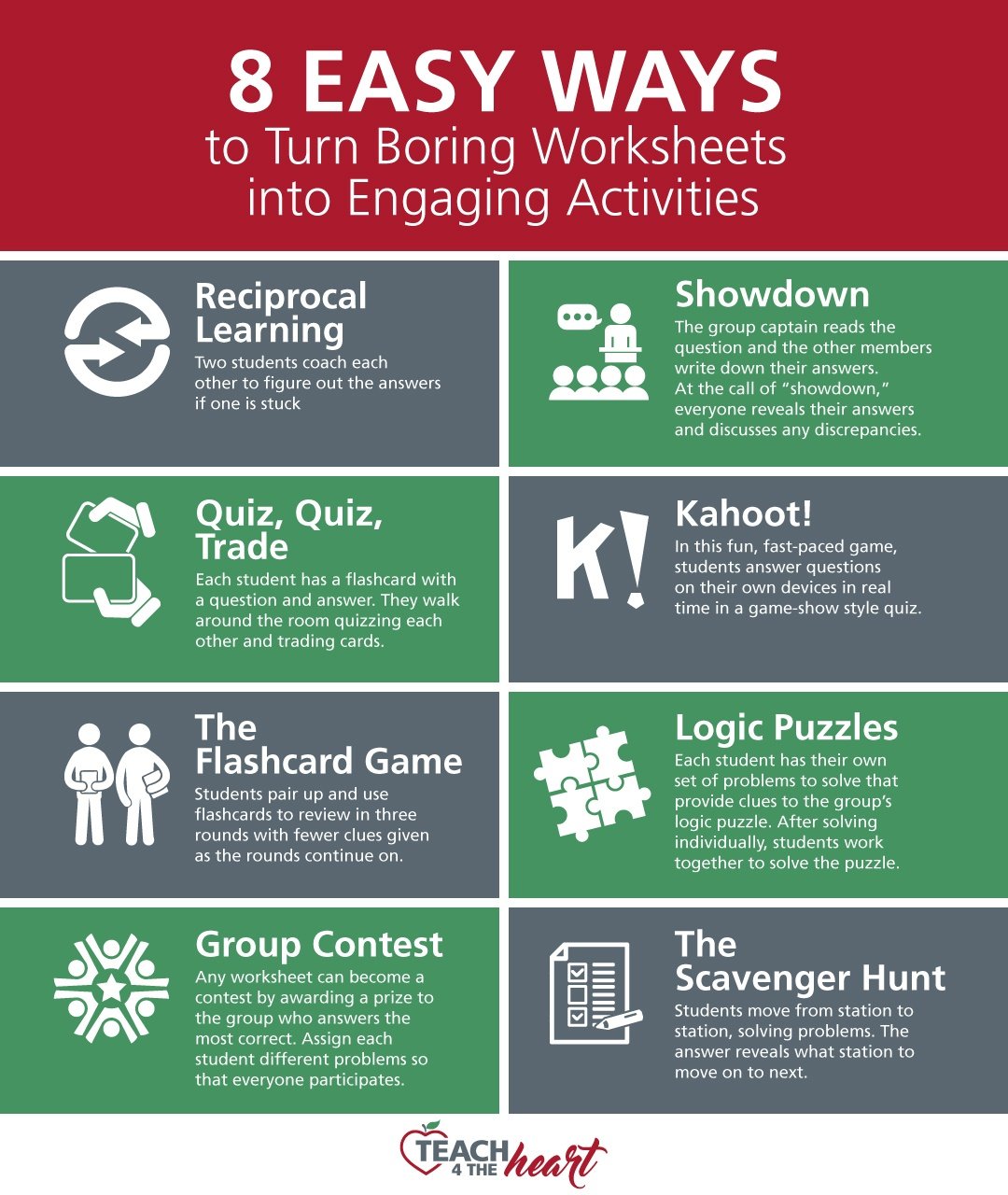

Discover seven easy ways to turn your existing (boring) worksheets into engaging activities that will grab and keep your students' focus.
Are your students tired of doing worksheet after boring worksheet?
What if you could turn worksheets into engaging activities that truly grabbed and kept your students’ focus – without spending tons of time and effort creating them?
Well, that’s exactly what we’re going to do today.
Before we get to that, though, an important note: While worksheets have gotten a bit of a bad rap lately, I do not believe they should be completely taboo.
Meaningful worksheets that help your students practice important skills can still be valuable. So don’t feel guilted into eliminating every single worksheet starting tomorrow. (My friend Jennifer Gonzalez does a great job explaining the difference between "busysheets" and "powersheets" here.)
However, there’s no doubt that the more engaging we can make our learning activities, the more focused our students will be and better they will learn. And these adaptations will help you do just that!
Here's my encouragement: Try out one or two of these activities in the next few weeks. If you like them, gradually incorporate more of them over time and watch your students become more and more engaged.

How it works: Students work in pairs and take turns coaching each other. Each student has their own set of problems/questions, and their partner has the answers (i.e. Student A has the answers to Student B’s questions, and Student B has the answers to Student A’s questions). Students go back and forth coaching each other, not giving the answer but helping their partner figure it out.
How to set it up: Split your worksheet into two sections. This can be as simple as saying “student A will do the evens and student B will do the odds.” Or, if the worksheet can be easily split down the middle, that works great, too. Next, prepare the answer keys for each partner. An easy way to do this is to print two copies of your answer key and then white out or cover the answers that shouldn’t be on each partner’s key. Print enough copies so that each group has a worksheet for student A, worksheet for student B, answers for student A, and answers for student B. (If you are having students work problems from a book, you can simply write the #’s each student is to solve on the board.)
How it works: In this activity from Kagan Cooperative Learning, students review or practice problems in groups of three or four. One student in each group (designated the Showdown Captain) reads the first question and all students write their answer on their own paper, tablet, or personal whiteboard, without letting anyone else see their answer. When everyone is ready, the Captain says “Showdown” and everyone shows their answers. Students then compare their responses and discuss any discrepancies. After that, the next student in the group assumes the responsibility of Showdown Captain and reads question #2. The process continues until students finish all questions or time has run out.
How to set it up: Set up for Showdown is super easy. Simply choose an existing worksheet or questions from a textbook for students to answer. Then explain the activity to your students and be available to intervene and answer questions as needed. (You can also add an extra bit of fun by having students answer on personal white boards like these.)
More details: Watch the video below to see an example of Showdown in action.
How it works: Each student starts with a flashcard containing a question on the front and the answer on the back. Students mix and mingle, looking for a partner to quiz. Student A asks Student B the question on their flashcard, then Student B asks student A the question on their flashcard. (If a student doesn't know the answer, their partner helps coach them to it.) After both questions are answered, students trade cards. They then raise their hands to signal they are ready for a new partner. After finding someone else with a raised hand, they pair up with their new partner and repeat the process until time is up.
How to set it up: This activity requires flashcards. You can either make them on your own ahead of time or have students make them in class before starting the activity. To make them yourself, simply cut up an existing worksheet and glue one question to each card. Fill in the answers on the back either by hand or by cutting & pasting the answers from the answer key.
If you don’t have time to make the flashcards yourself, enlist a student to make them for you. Or, have students make their own flash card in class. Provide each student a blank flash card and have them write one question – either from their notes, from the textbook, or from a worksheet you provide. That will become their first card. (Don’t worry if more than one student chooses the same question. It’s not a problem.)